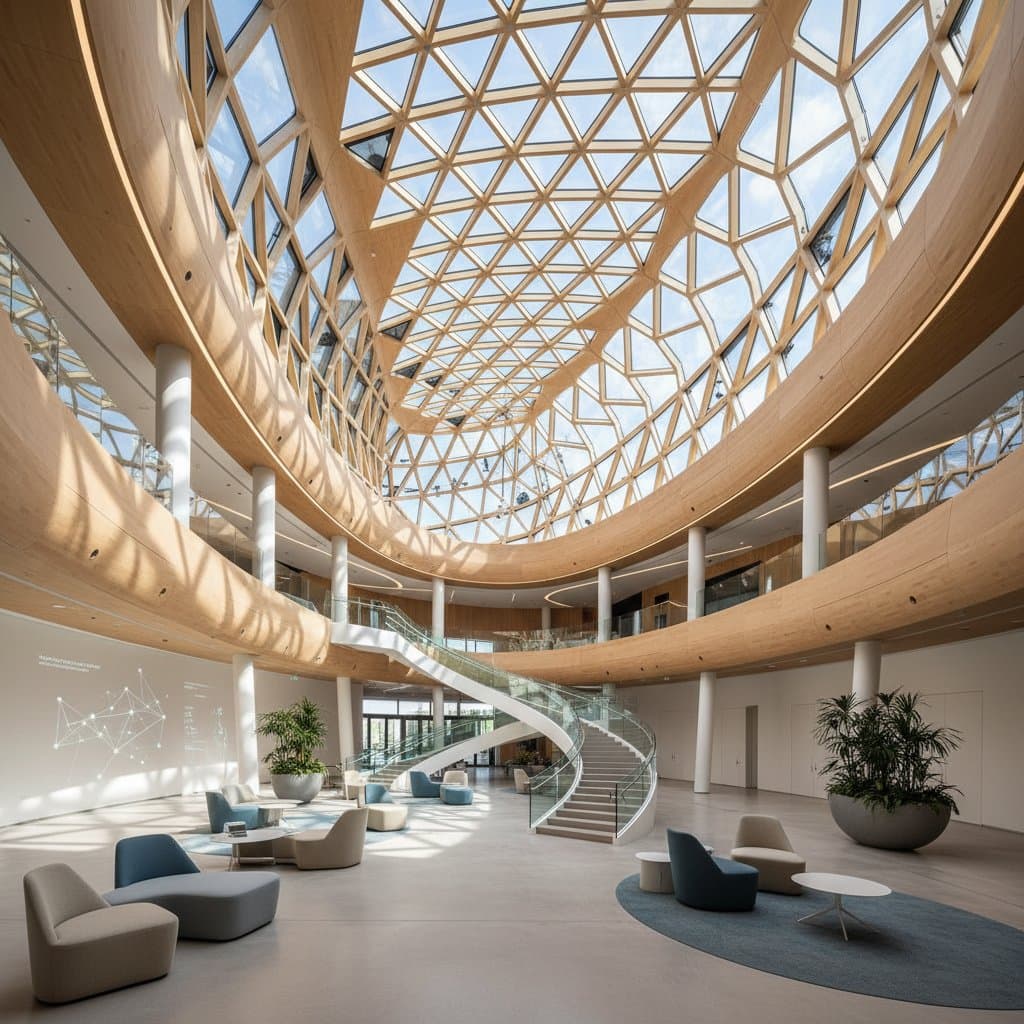The Emergence of Parametric Design in Contemporary Architecture
Imagine encountering a structure whose surfaces undulate like waves or whose patterns evolve with the passage of sunlight. Such dynamic forms prompt questions about the methods behind their creation. Parametric design provides the key, employing digital algorithms to generate complex geometries that maintain structural integrity.
Historically, this methodology resided in avant-garde ateliers and specialized firms. In recent years, it has permeated standard practice, affecting residential developments, commercial complexes, and civic installations. Architects leverage these tools to fuse imaginative concepts with precise engineering, resulting in environments attuned to human occupancy and ecological demands.
Factors Driving the Adoption of Parametric Design
Beyond visual allure, parametric design excels in optimizing performance and resource use. Professionals face pressure to produce designs that conserve energy, withstand environmental stresses, and allocate materials judiciously. Parametric software facilitates rapid iteration of scenarios, identifying optimal configurations without extensive physical prototyping.
Consider a seaside residence engineered to channel sea breezes through adjustable louvers, or a high-rise with a cladding system that modulates shading based on seasonal light angles. These adaptations occur via parametric simulations, which refine outcomes in real time. Consequently, projects achieve superior energy efficiency while preserving aesthetic coherence.
Integrating Creativity with Computational Precision
Parametric design enhances rather than supplants artistic intent. Algorithms manage intricate computations, permitting designers to prioritize conceptual development and narrative elements. This workflow fosters experimentation, realizing forms infeasible through manual techniques.
Envision a cultural center with a canopy that mimics natural foliage, modulating transparency to control internal daylight, or an apartment block where balcony screens respond to prevailing winds for natural cooling. These implementations stem from parametric modeling in platforms like Rhino and Grasshopper, where parameters define variables such as curvature radius or panel density. Human insight directs the process, ensuring that technical feasibility aligns with expressive goals.
Expanding Parametric Approaches Across Disciplines
The principles of parametric design influence fields beyond building envelopes. Urban designers apply them to simulate traffic patterns and integrate green corridors in metropolitan layouts. Landscape architects use similar techniques to contour terrain for erosion control and biodiversity support.
Within interiors, parametric methods refine spatial acoustics by adjusting ceiling geometries or optimize lighting distribution through parameterized fixtures. This interdisciplinary application underscores a paradigm shift: structures evolve from fixed entities to interactive ecosystems. In variable climates, such as Mediterranean zones with intense summers, minor parametric tweaks to orientation and insulation can significantly elevate occupant comfort and operational savings.
Practical Applications and Implementation Strategies
To incorporate parametric design, begin by identifying core parameters like site constraints, material properties, and performance targets. Collaborate with firms proficient in tools such as Dynamo for Revit or custom scripting in Python. Early-stage modeling reveals potential challenges, such as fabrication tolerances for curved elements, allowing proactive adjustments.
For mid-scale projects like educational facilities, parametric envelopes can incorporate solar tracking to minimize glare in classrooms. In residential contexts, facade systems might parameterize privacy levels based on adjacency to public views. These strategies democratize advanced design, making sophisticated outcomes accessible to diverse budgets.
Advancing Projects Through Parametric Expertise
As computational capabilities advance, parametric design prioritizes practical integration over novelty. Clients benefit from enhanced durability and lifecycle costs, with simulations predicting maintenance needs years ahead.
Engage specialists early to map your vision against parametric possibilities. They guide from parametric scripting to digital fabrication, ensuring seamless translation to built reality. This methodology not only elevates architectural quality but also aligns developments with sustainable imperatives, fostering spaces that thrive in harmony with their surroundings.
